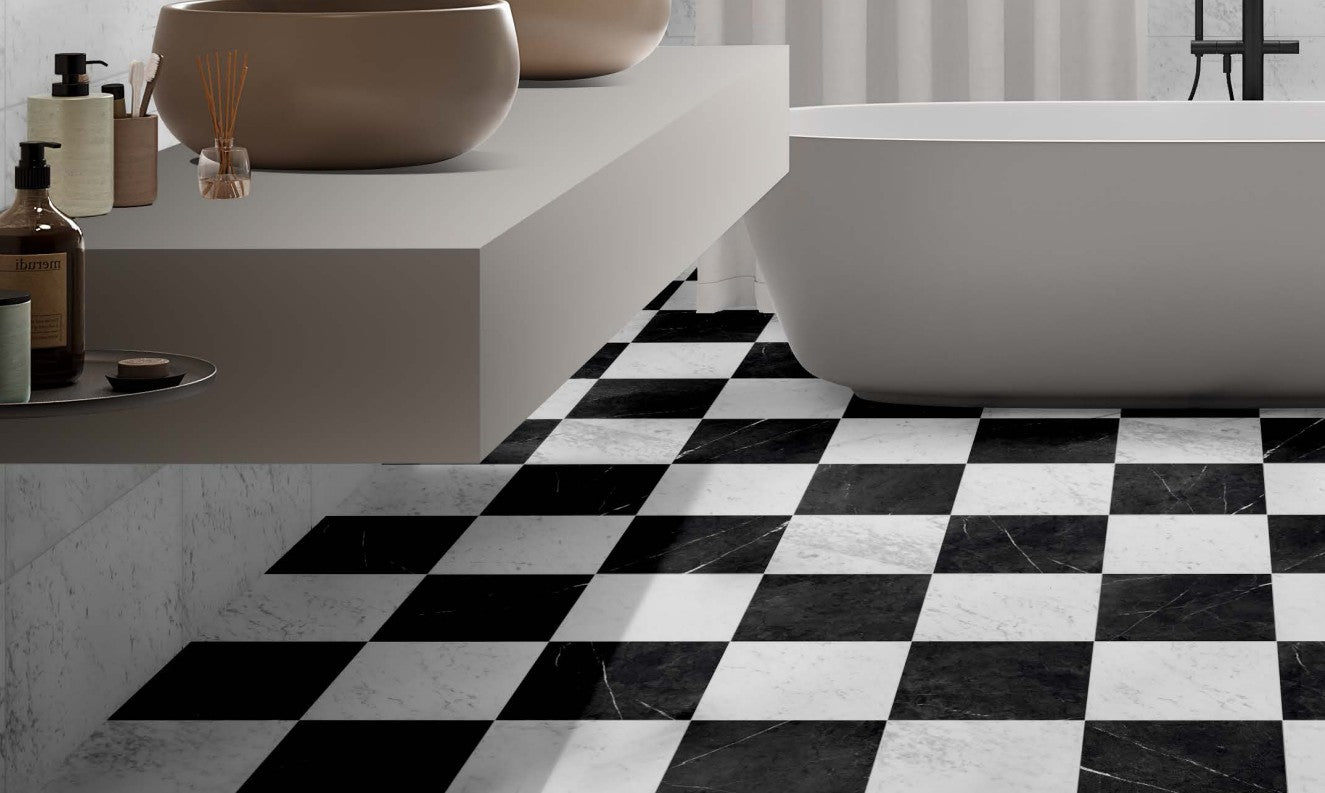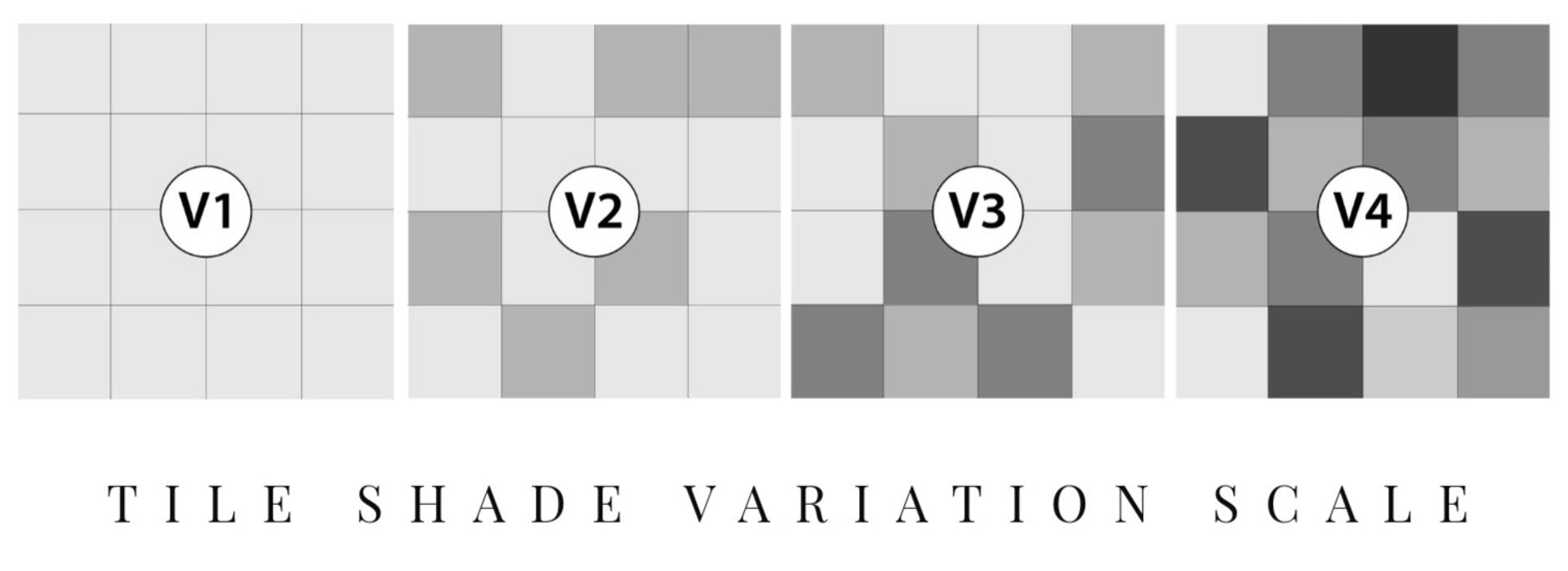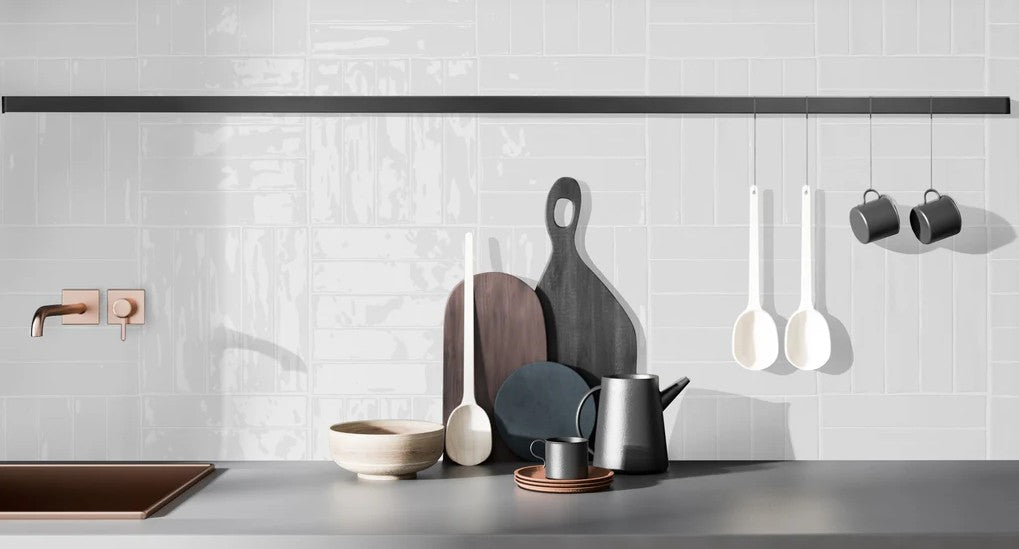Vintage tile patterns hold more than good looks. Their designs are shaped by art movements and social changes that stretch back over 100 years. Most people are surprised to learn that the Arts and Crafts movement alone helped spark a handmade tile revival, and sparked a turn away from factory-made tiles in favor of intricate, artisanal craftsmanship. You might expect these patterns to just be about decoration, but every vintage tile actually hides a story about the history, culture, and spirit of its era.
Table of Contents
- Understand The History Of Vintage Tile Patterns
- Identify Popular Vintage Tile Styles
- Assess Your Space For Vintage Tile Applications
- Choose The Right Color Palettes For Vintage Tiles
- Mix And Match Vintage Tiles For Unique Designs
- Know Where To Source Quality Vintage Tiles
- Maintain And Care For Vintage Tile Surfaces
Quick Summary
| Takeaway | Explanation |
|---|---|
| Understanding tile history enriches selections | Knowledge of historical context informs better choices regarding vintage tile patterns and styles. |
| Consider architectural context when choosing tiles | Your home’s architectural style should guide your selection to ensure cohesiveness and authenticity. |
| Lighting affects tile appearance significantly | Evaluate how natural and artificial lighting will interact with your tiles to enhance or alter their visual appeal. |
| Mixing tiles requires thoughtful design strategies | Use a consistent color palette and balance intricate patterns for a harmonious design when combining different tile styles. |
| Proper maintenance preserves vintage tiles’ beauty | Utilize gentle cleaning methods and temperature control to ensure the longevity and integrity of vintage tiles. |
1: Understand the History of Vintage Tile Patterns
Choosing vintage tile patterns requires more than just aesthetic appreciation—it demands a nuanced understanding of their rich historical context. The story of vintage tiles is deeply intertwined with artistic movements, cultural shifts, and technological innovations that have shaped design throughout the decades.
The Arts and Crafts movement, which emerged in the late 19th century, profoundly influenced tile design by emphasizing handcrafted quality and intricate patterns. According to research from the Smithsonian American History Museum, this movement rejected mass industrial production and celebrated artisanal craftsmanship.
Vintage tile patterns often reflect specific historical periods and design philosophies. Key characteristics include:
- Intricate geometric designs from Art Deco periods
- Hand-painted ceramic tiles reminiscent of Mediterranean traditions
- Detailed mosaic patterns inspired by classical architectural styles
- Textured relief tiles that showcase remarkable sculptural qualities
Understanding these historical nuances helps homeowners and designers make informed decisions when selecting vintage tile patterns. Each pattern tells a story—whether it represents early 20th-century American craftsmanship or European design traditions.
For those interested in exploring more historical tile design inspiration, check out our guide on luxurious bathroom tile ideas, which offers insights into how historical design principles continue to influence contemporary tile selections.
By studying the evolution of tile patterns, you gain more than decorative knowledge. You connect with design traditions that have shaped architectural aesthetics for generations, transforming your space into a narrative of artistic heritage and timeless elegance.
2: Identify Popular Vintage Tile Styles
Exploring vintage tile styles reveals a world of design diversity that transcends mere surface decoration. Vintage tile patterns represent more than aesthetic choices—they are historical artifacts that capture the design sensibilities of different eras.
According to Architectural Digest, several distinctive vintage tile styles have left an indelible mark on interior design. These styles reflect specific cultural and artistic movements that shaped architectural aesthetics throughout the 20th century.
Key vintage tile styles include:
- Art Deco: Geometric patterns with bold colors and sharp angles
- Victorian: Intricate floral motifs and ornate ceramic designs
- Mid-Century Modern: Clean lines and minimalist color palettes
- Mediterranean: Vibrant, hand-painted ceramic tiles with complex patterns
Each style communicates a unique narrative about the period it represents. Art Deco tiles, for instance, showcase the industrial optimism of the 1920s and 1930s, while Victorian tiles reflect the ornate sensibilities of 19th-century design.
Understanding these styles helps homeowners and designers make informed choices that complement architectural contexts and personal aesthetic preferences. Some collectors and design enthusiasts even treat vintage tiles as investment pieces, appreciating their historical and artistic value.
Explore our curated collection of vintage tile inspirations to discover how these timeless styles can transform your living spaces. From intricate mosaic patterns to bold geometric designs, vintage tiles offer a rich palette of design possibilities that connect contemporary interiors with historical design traditions.
Remember that selecting vintage tile styles is not just about visual appeal—it is about creating a meaningful connection between architectural heritage and personal design expression.
3: Assess Your Space for Vintage Tile Applications
Choosing vintage tile patterns requires thoughtful spatial analysis to ensure seamless integration and visual harmony. Understanding your specific architectural environment is crucial for successfully implementing vintage tile designs that complement rather than clash with existing elements.
According to National Kitchen & Bath Association research, selecting the right tile pattern depends on multiple spatial considerations.
Key spatial factors to evaluate include:
- Room dimensions and proportions
- Natural and artificial lighting conditions
- Existing architectural style and color palette
- Traffic patterns and functional requirements
- Structural limitations and surface preparation needs
Room size dramatically influences tile selection. Smaller spaces benefit from lighter colored vintage tiles with smaller geometric patterns that create an illusion of expanded space. Conversely, larger rooms can accommodate more elaborate and intricate vintage tile designs without feeling overwhelmed.
Lighting plays a critical role in vintage tile perception. Natural light will highlight tile textures and color variations, while artificial lighting can create dramatic shadows and visual depth. Consider how different times of day might transform the appearance of your chosen vintage tile pattern.
Explore our comprehensive guide to tile selection techniques to gain deeper insights into matching vintage tiles with your unique space.
Architectural context matters immensely. A mid-century modern home might embrace geometric Art Deco tiles, while a Victorian-era residence could beautifully incorporate intricate ceramic patterns. Matching tile styles to architectural heritage ensures a cohesive and authentic design narrative.
4: Choose the Right Color Palettes for Vintage Tiles
Color selection is the heartbeat of vintage tile design, transforming ordinary spaces into extraordinary visual narratives. Understanding historical color palettes requires more than aesthetic appreciation—it demands a nuanced approach to design authenticity.
According to Color Marketing Group, color trends are deeply rooted in cultural and historical contexts, making vintage tile color selection a sophisticated art form.
Historical color palette considerations include:
- Authenticity to specific design periods
- Harmonization with existing architectural elements
- Psychological impact of color combinations
- Natural light interaction with tile surfaces
- Emotional resonance of vintage color schemes
Vintage tile color palettes vary dramatically across different design eras. Art Deco periods embraced bold geometric colors like emerald green, deep sapphire, and rich burgundy. Mid-century modern designs preferred muted earth tones—soft avocado, mustard yellow, and warm terracotta.
When selecting colors, consider how natural and artificial lighting will interact with your vintage tile choices. Muted pastels might appear differently under morning sunlight compared to evening ambient lighting, creating subtle yet significant visual transformations.
Discover expert insights on tile color coordination to elevate your design strategy. Understanding color theory helps create spaces that feel both timeless and personally meaningful.
Remember that vintage tile colors are not just decorative elements—they are storytelling mediums that connect contemporary spaces with rich historical design traditions. Each carefully chosen color palette represents a dialogue between past architectural aesthetics and modern design sensibilities.
5: Mix and Match Vintage Tiles for Unique Designs
Mixing vintage tile patterns is an art form that transforms ordinary spaces into extraordinary design narratives. This approach requires a delicate balance between creative expression and visual harmony.
According to University of Oregon’s design research, successful pattern mixing involves understanding fundamental design principles.
Essential strategies for mixing vintage tiles include:
- Maintain a consistent color palette across different patterns
- Balance complex designs with simpler tile arrangements
- Use transitional tiles to create smooth visual connections
- Consider scale and proportion of tile patterns
- Respect the architectural context of your space
Contrasting yet complementary patterns create visual interest and depth. For instance, pairing a geometric Art Deco tile with a more organic Mediterranean design can produce stunning results when executed thoughtfully.
Texture plays a crucial role in pattern mixing. Combining glossy and matte tiles, or integrating tiles with different relief levels, adds dimensional complexity to your design. Think of these variations as visual conversations between different design elements.
Explore our curated vintage tile design techniques to unlock creative possibilities for your space. Remember that successful tile mixing is about creating a harmonious visual story, not just randomly assembling different patterns.
Ultimately, mixing vintage tiles is an opportunity to express personal style while paying homage to historical design traditions. Each tile becomes a brushstroke in your unique architectural canvas, telling a rich and nuanced design narrative.
6: Know Where to Source Quality Vintage Tiles
Sourcing authentic vintage tiles requires a strategic approach that balances historical integrity with practical acquisition methods. The quest for genuine vintage tile patterns demands knowledge, patience, and a keen eye for quality.
According to National Park Service preservation guidelines, identifying reliable sources is crucial for obtaining genuine vintage tiles.
Key strategies for finding quality vintage tiles include:
- Research specialized architectural salvage yards
- Connect with vintage tile restoration specialists
- Attend architectural salvage auctions
- Network with historic preservation societies
- Explore online marketplaces dedicated to vintage materials
Authenticity requires thorough investigation. Reputable sources will provide documentation about a tile’s origin, age, and manufacturing technique. Vintage tiles are not just decorative elements—they are historical artifacts that carry unique stories and craftsmanship.
Price should not be the sole determining factor. Cheaper alternatives might compromise historical accuracy and design integrity. Professional tile collectors and restoration experts recommend investing in pieces that have been carefully preserved and authenticated.
Explore our comprehensive guide to vintage tile selection to refine your sourcing techniques. Understanding the nuanced world of vintage tiles transforms your search from a simple purchase to a meaningful design journey.
Consider working with specialists who can verify tile provenance, assess condition, and provide insights into proper restoration and installation techniques. Your vintage tile collection becomes more than a design choice—it becomes a curated narrative of architectural heritage.
7: Maintain and Care for Vintage Tile Surfaces
Preserving vintage tile surfaces requires a delicate balance of specialized knowledge and gentle maintenance techniques. These historical artifacts demand respect and precise care to maintain their original beauty and structural integrity.
According to preservation experts, proper maintenance is critical for preventing irreversible damage to vintage tiles.
Essential maintenance strategies include:
- Use pH-neutral cleaning solutions
- Avoid abrasive scrubbing tools
- Implement regular but gentle cleaning routines
- Protect tiles from extreme temperature fluctuations
- Seal grout lines periodically to prevent moisture penetration
Temperature and humidity control plays a crucial role in vintage tile preservation. Extreme environmental conditions can cause cracking, discoloration, and structural degradation. Maintaining consistent indoor temperatures between 60-75 degrees Fahrenheit helps prevent potential damage.
Cleaning vintage tiles requires a nuanced approach. Harsh chemicals can strip away delicate glazes and compromise intricate patterns. Soft, microfiber cloths and specialized ceramic cleaning solutions are recommended for maintaining the original luster and preventing surface erosion.
Discover expert tile preservation techniques to extend the life of your vintage tile collection. Professional conservators suggest documenting your tiles’ condition periodically and addressing any signs of wear immediately.
Ultimately, maintaining vintage tiles is about creating a conservation strategy that honors their historical significance. Each careful cleaning and preservation effort ensures these beautiful design artifacts continue telling their unique architectural stories for generations to come.
Below is a comprehensive table summarizing the key steps, strategies, and insights for choosing and implementing vintage tile patterns as outlined in the article.
| Step/Tip | Key Focus | Notable Benefits/Insights |
|---|---|---|
| Understand History of Vintage Tile Patterns | Learning about art movements and cultural context | Informed selections that honor design tradition and add narrative depth |
| Identify Popular Vintage Tile Styles | Recognize major design eras: Art Deco, Victorian, Mid-Century, etc. | Enables style matching with home architecture and personal preference |
| Assess Your Space | Evaluate room size, lighting, and architectural context | Ensures seamless visual integration and maximizes space and light interplay |
| Choose the Right Color Palettes | Select historically authentic color schemes and consider lighting | Achieves design harmony and enhances emotional/visual impact |
| Mix and Match Vintage Tiles | Balance patterns, textures, and color consistency | Allows unique, personalized designs while maintaining cohesion |
| Source Quality Vintage Tiles | Seek out reputable vendors, salvage, and specialists | Authentic pieces with historical provenance and lasting value |
| Maintain and Care for Vintage Tiles | Use gentle cleaning and practice preventative preservation | Protects tile appearance and structural integrity for generations |
Make Your Vintage Tile Vision a Reality with TileChoices.com
You have just explored the essential steps for choosing authentic vintage tile patterns and learned why understanding history, style, color, and sourcing matters. If you feel overwhelmed by options, worried about finding genuine quality, or unsure how to blend vintage character with modern needs, you are not alone. Many people struggle with bringing timeless tile ideas into real projects because they lack access to trusted products and reliable support for everything from sourcing to design guidance.

Experience how simple your vintage tile journey can be with TileChoices.com. Our curated selection and detailed resources help you confidently select tiles that fit your unique space and personal taste. Take the next step now and explore our full range of quality tiles and inspiration to turn your vision into lasting beauty. The perfect blend of history and style awaits—start your project with us today.
Frequently Asked Questions
What are vintage tile patterns?
Vintage tile patterns are designs that reflect historical artistic movements and cultural influences, often characterized by intricate geometric designs, ornate motifs, and unique color palettes from different eras.
How do I choose the right vintage tile style for my home?
Selecting the right vintage tile style involves understanding your home’s architectural context, personal aesthetic preference, and the historical significance of different tile styles, like Art Deco or Victorian, to create a cohesive design.
Can vintage tiles be mixed and matched?
Yes, vintage tiles can be mixed and matched creatively. Maintaining a consistent color palette, balancing complex patterns with simpler ones, and considering the scale and architectural context of your space are essential for achieving harmony.
What maintenance is required for vintage tile surfaces?
Vintage tile surfaces need gentle maintenance with pH-neutral cleaning solutions, avoiding abrasive tools, and implementing regular cleaning routines while protecting tiles from temperature extremes and sealing grout lines to prevent moisture damage.









